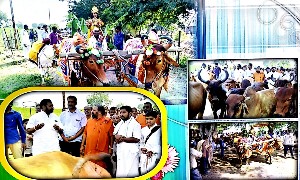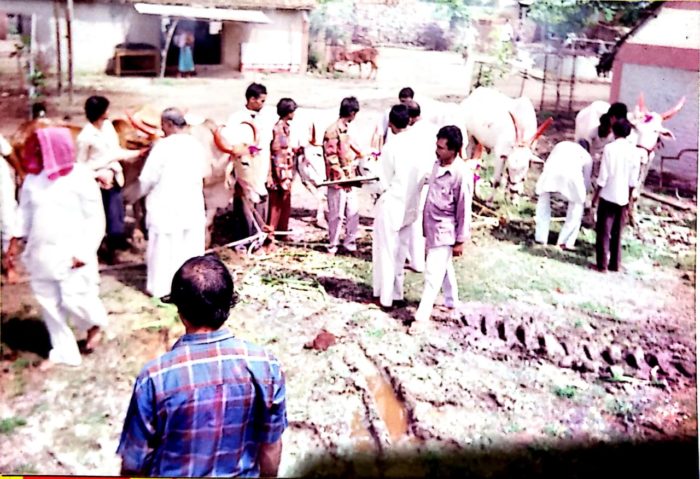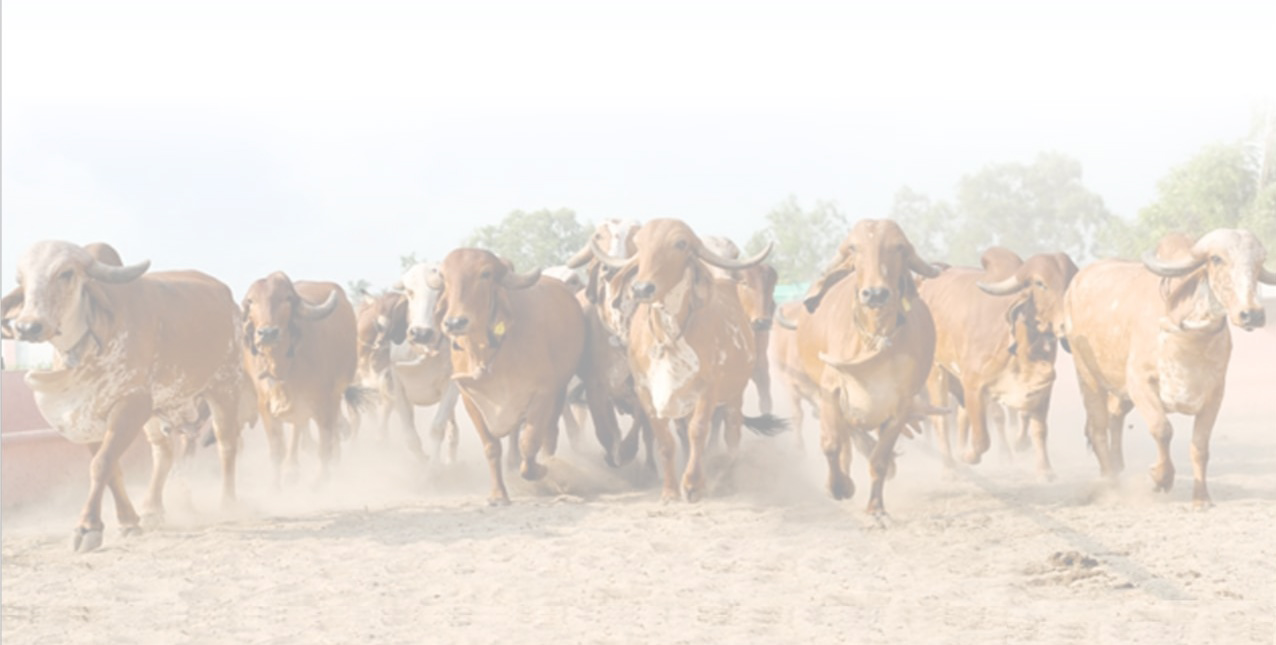i)Gopashtami:
As per our Sanatan calendar, which is most scientific and which is based on revolution of moon around the earth (Lunar cycle), Gopashtami is celebrated every year on Kartik Shukla Ashtami (on eight day (Ashtami) of 1st half or bright fortnight (Shukla paksha) of the month of Kartik). In other words, Gopashtami is the eight day after Ashwin Amavasya i.e. Laxmi Pooja day of Diwali.
According to the ancient texts, following auspicious events took place on the day of Gopashatami, in the earlier Yug (era).
In Gokul (Where Lord Krishna lived in his childhood), on Kartik Shukla Ashtami, Nand Raja (foster father of Krishna) initiated Krishna as cowherd . That is why Krishna is lovingly called Gopal Krishna (Gopal means cowherd). Earlier he was taking care of only calves. Since then every year, Kartik Shukla Ashtami is celebrated as Gopashtami.
Kamdhenu (the divine cow, also known as Surabhi) appeared during churning of the cosmic ocean (Samudramanthan) by the Gods and demons to aquire Amrita (ambrosia, elixir of life, nectar), on Kartik Shukla Ashtami. This is mentioned in Mahabharata (Adi Parva). On appearance, she was handed over to Saptarshi (Seven great seers). This one is the most popular story among others, available in ancient texts, relating to appearance of Kamdhenu,
Kamdhenu is described as mother of all the cows. That is why all cows are considered and worshipped as Kamdhenu.
Gopashtami is celebrated all over India. This is the day to remember the favours bestowed by cow on the mankind.

“Gopashtami celebrations and Vishnu Yag at our Mhaispur site”.
Since 1998, our institution has been celebrating Gopashtami at our Mhaispur site. It was started with the inspiration from Golokvasi Param Pujaniya Shri Dongreji Maharaj. On this day, cow is bathed, decorated and worshipped (pooja is done). The cowherds (Gwalas) are also honoured. She is offered Gogras (fodder) and her Parikrama (rounding the cow) is done. On this day Shri Vishnu Yag is also performed with the prayers that slaughter of the cow progeny must be stopped. On this occasion, every year two guests viz renowned spiritual guide or a social worker and a learned personality from the field related to science are invited to guide the gathering. Every year a different religious family willingly and joyfully sponsors the Gopashtami celebrations and Shri Vishnu Yag as the yajman (host).
ii)Makar Sankrant:
As per Hindu calendar, festival of Makar sankrant is celebrated on the Solar day unlike other Hindu festivals which are lunar events i.e. are celebrated on the lunar days. It is celebrated every year on 14th or 15th January. On this day, Sun enters Makar Rashi (Zodiac sign of Capricorn) on the celestial path. This day is observed all over India and Nepal with celebrations like kite flying (viz International kite festival is held at Ahmedabad), fairs, bathing in rivers, worshiping Surya Dev (Sun god), cultural events etc.
It is a festival of harvest. The famous Kumbha mela is also held after every twelve years, on the day of Makar Sankrant . It is the first festival observed in Uttarayana (phase of around 6 months in which earth moves towards north on the celestial sphere). During Uttarayana, days are longer and the nights are shorter.
In different parts of India, this festival is celebrated with different names viz Makar Sakrant or Til Sankrant in Maharashtra, Lohri in Punjab, Pongal in Tamilnadu, Uttarayan in Gujrat and Bhogali Bihu in Assam. On this day, Till-gul laddu (delicacy made from sesame seeds and jaggery) are given to and received from friends, relatives. Particularly, elders give it to youngers along with Shubha Aashirvada (blessings). They are also given in Dan (Present). Other delicacies made from Til-gul are Gajak and Chikki. In Maharashtra it is a common expression while exchanging Til-gul, ‘Til Gul ghya ani god god bola’ (Eat Til-gul and speak sweetly).
यज्ञशिष्टाशिन: सन्तो मुच्यन्ते सर्वकिल्बिषै:|
भुज्जते ते त्वघं पापा ये पचन्त्यात्मकारणात् ||
(भगवद्गीता – 3.13)
(Broad meaning : Those who enjoy what they have (wealth/food) only after donating/sharing it’s reasonable part with others are liberated from all sins/faults, nevertheless earning or cooking only for one’s own sake is sin.)
We have ancient tradition of donating/gifting on the auspicious day of Makar Sankrant. Donation given on special occasions like Makar Sankrant, results in gains in multiple times to the donor.
With a view to enlighting the society about our ancient tradition of donating and to unite the members of the society for the noble cause like Goseva, our organization is celebrating Makar Sankrant since 1999.
On this day, businessmen and cow-devotees donate cash or other eatables like hay, grass, jaggery, maize for cows. Even various associations related to different businesses collect such gifts/donations from their members and handover the same to our organization. This contributes in feeding cow progeny.
iii)Pola:
Bulls and oxen are from cow family i.e. are part of cow progeny. Since ancient times, bulls have been back bone of farm based Bhartiya economy. In recent times, due to technological developments like tractors and tempos, support of the bulls in farming and transport is reduced.
For expressing our gratitude towards bulls, for their invaluable contribution in subsistence of mankind, festival of Pola is celebrated. It is observed on Shravan or Pithori Amavasya (new moon day or last day of the month of Shravan, as per Hindu calendar). This festival is mainly celebrated in Maharashtra and Chhattisgarh, wherein it is also called as Bail Pola (Bull’s Pola). A Similar Festival is celebrated with the name Mattu Pongal in south. In western and northern parts of Bharat, it is observed as Godhan.
On this day, the bulls are bathed, decorated, garlanded an worshipped. Their horns are painted. No work is got done from them on this day. In the evening, procession of all the bulls in a village or a town is taken out.
At our Mhaispur site also, Pola is celebrated every year. Farmers in the vicinity, bring their decorated bulls to the site in the evening. They are fed and worshipped by the gathering. Then the farmers disperse with their bulls and take them to the houses in the village, to be worshipped by the ladies from every household.
iv)Dasera:
Dasera is an important festival and precious day. As per Hindu calendar, festival of Godess (Devi) i.e. Navaratrra is celebrated from first day to nineth day of first half (bright fortnight) of the month of Ashwin and 10th day is observed as Dasera or Vijaya Dashami.
Godess Durga incarnated as Chandi to destroy demons like Shumbh, Nishumbh, Raktabij, Mahishasur etc. She had war with these Demon’s for 9 days, which are celebrated as Navaratri. On Dashami, Chandi destroyed Mahishasur and won a tremendous victory (Vijay). That is why this tenth day is celebrated as Vijayadashami.
As per ancient texts (Puranas), on Ashwin Shuddha Dashami (tenth day of the first half of the month of Ashwin), when the star is visible in the Sky, that moment is ‘Muhurta’ (auspicious moment) named Vijay. Whatever task one starts or undertakes at Vijay Muhurta is accomplished successfully. There are special three and half Muhurtas (auspicious days) in a Hindu calendar year viz Chaitri Padwa or Gudi Padva (Chaitra Shuddha Pratipada – first day of first half of the month of Chaitra), Akshay Trutiya (third day of first half of the month of Vaishakh), Vijayadashami (as detailed above) and Diwali Padwa (first day of first half of the month of Kartik – half muhurta).
On the Day of Vijayadashami, trees of ‘Shami’ (Prosopis cineraria) and ‘Aapta’ (Bauhinia racemosa) are worshipped. On the day of Vijayadashami, God Rama worshipped the tree of Shami and marched for the battle with Ravana and killed him. Pandavas also, on the day of Vijayadashami came out of hiding, worshipped the Shami tree and took back their weapons, which were hid on Shami tree before going in hiding.
Raghu Raja (ancestor of the God Rama) had to pay fourteen crore gold coins to Kautsa. So he invaded Kubera (Lord of Wealth). Being frightened, Kubera showered Shami tree with gold coins on the day of Vijayadashami. Raghu Raja gave required Gold coins to Kautsa and remaining Gold coins were distributed by him among the citizens of his kingdom. This is the story from Skanda Puran. The tradition of collecting leaves from Shami tree on Vijayadashami and giving them to relatives and friends, seems to have been inspired by this story of Raghu Raja.
The festival of Vijayadashami is celebrated all over Bharat. In many cities in Bharat, statue of Ravana is burned on the day of Vijayadashami, to mark the victory of good over evil.
In the ancient times, kings in Bharat used to start their march for expansion of their kingdoms on the day of Vijayadashami.
On this day, people worship weapons, machinery, texts, accountancy books, vehicles i.e. the things which support their livelihood.
At our Mhaispur site, we have trees of Shami and Aapta. On Vijayadashmi day, people from the vicinity and even from the city of Akola, come with their families at the Mhaispur site and worship Shami and Apta trees and collect leaves from these trees for giving to their friends and relatives
v) Naga Panchami at our Alegaon site:
According to Hindu calendar, festival of Naga Panchami is celebrated on fifth fay of bright half of Lunar month of Shravana. The festival is traditionally celebrated in throughout Bharat and Nepal. On this day, statue or image or painting of Naga (snake or serpent) is worshipped and blessings are sought for welfare of the family.
At our Alegaon site, there is an old Naga (serpent) temple named Hudi Mandir. Stone statue of Naga has been installed in the temple. The temple is renovated recently. Every year, Naga Panchami is celebrated at Hudi Mandir on large scale. People of Alegaon and nearby villages visit the temple for Darshana of Naga Devata and offer flowers, Prasada and break coconuts.





